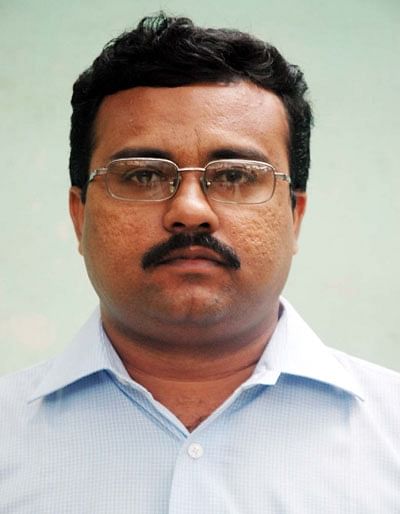Keeping democracy-in-exile alive after Dalai Lama
This is not the exiled community’s first brush with democracy though. Soon after he fled to India in the wake of the Chinese People’s Liberation Army’s foray into Tibet, the Dalai Lama started familiarising his people with democracy. The Commission of Tibetan People’s Deputies (parliament-in-exile) was the first elected body of people’s representatives in the history of Tibet and it took office as early as on Sept 2, 1960.
And, over the next decades, while leading the struggle for what he calls ‘genuine autonomy’ for his homeland, he also continued to encourage the exiled community to practice democracy and thus lay the foundation of a future Tibet, which he wants to have a democratic polity with no political power vested in the institution of Dalai Lama.
So the exiled Tibetans now have a democratically elected local legislatures in each refugee settlements around the world, a 46-member Assembly of Tibetan People’s Deputies with 13 per cent reservation for women and a Kashag (council of ministers) headed by a directly elected Kalon Tripa. Dalai Lama delegated much of his political powers to the Kashag and Kalon Tripa.
Samdhong Rinpoche, the first directly elected Kalon Tripa, says: “Tibetan democracy is a result of a top down initiative. The community embraced democracy because Dalai Lama relentlessly encouraged it to. This is unique and unlike other communities and nations that ushered in democratic system of governance due to struggles by people at the grassroots level.” Rinpoche will complete his second five-year term as Kalon Tripa in August 2011.
Dalai Lama has reasons to pass the baton of exiled Tibetans’ political leadership to the democratically elected Kalon Tripa. He is now 75. There are little hopes that the Tibetans’ struggle for ‘genuine autonomy’ of Tibet is unlikely to reach its logical conclusion during his lifetime.
The Dalai Lama has already announced that he would not reincarnate in Chinese occupied Tibet unless Beijing grants genuine autonomy to his homeland before he breathes his last. But the premonition is unlikely to deter China from propping up one or more to claim to be his reincarnation, backing them to challenge the one picked up by what it calls the ‘Dalai Clique’ and thus orchestrating a chaos to crush the Tibetans’ 51-year-long struggle.
China reconfigured its policies on Tibet and stepped up its preparations for the post-Dalai Lama situation after the March 2008 unrest in Lhasa, Ganshu, Sichuan and Qinghai.
In October 2008, Beijing embarked on a $11.7-million project to build China’s first-ever government-sponsored Academy of Tibetan Buddhism near Lhasa to train ‘patriotic and devotional religious personnel’ — a euphemism of monks with allegiance to Beijing. As Abanti Bhattacharya, Delhi University’s department of east Asian studies, puts it, it is intended to create ‘an officially approved cadre of monks’ to dilute the influence of Dalai Lama.
Beijing’s approval
Beijing’s first major move towards creating a monkhood subservient to it came on July 18, 2007, when China’s state administration of religious affairs issued the ‘regulation on management measures for the reincarnation of ‘Living Buddhas’ in Tibetan Buddhism. It required all reincarnate monks to be approved by Beijing. “Through this major tactical step, China asserted its right to manage and select all reincarnate lamas of Tibetan Buddhism and thereby sought to choose its own Dalai Lama after the present one passes away,” says Bhattacharya.
The Chinese government arranged a meeting between its own Panchen Lama Gyaltsen Norbu and Singapore’s foreign minister George Yeo in Beijing on September 14. The meeting was apparently intended to raise the profile of Norbu, whom Beijing propped up as 11th Panchen Lama in 1995, against Dalai Lama’s choice Gedhun Choekyi Nyima as the reincarnation of the 10th Panchen Lama. Nyima, now 21, has been in ‘protective custody’ of the Chinese authorities in an undisclosed location since May 17, 1995, when he was just six.
The Panchen Lamas have been the second highest spiritual leaders — after the Dalai Lamas — of the Gelugpa sect of Tibetan Buddhism. So Beijing is preparing Norbu to play an important role during the chaos that would follow the current Dalai Lama’s death. Yeo was the first foreign dignitary to meet Norbu, whom the Chinese government in February nominated as a member of the national committee of the Chinese People’s Political Consultative Conference.
India has maintained a studied silence on Dalai Lama’s efforts to democratise the community of exiled Tibetans. “New Delhi officially maintains that Tibet is a part of China. So it cannot publicly hail the elections in the exiled community as doing so may be tantamount to promoting democracy in future Tibet,” says Srikanth Kondapalli, professor in Chinese studies in Jawaharlal Nehru University. He, however, adds that New Delhi should positively look at the exiled Tibetans’ pursuit of democracy. For, he explains, more powerful the community can make the democratic institutions, lesser will be the uncertainty and chaos after Dalai Lama’s death and, equally importantly, weaker will be the claim and authority of the Beijing-backed claimant of his legacy.
If the issue of Tibet is still a card for India to count on while managing its complex relation with an increasingly assertive China; New Delhi must step up its preparations to keep it relevant beyond the lifetime of the present Dalai Lama. And one of the ways to do this is to continue encouraging democratic practices within the exiled community and tacitly help the Tibetan government-in-exile promote itself as a future leader of Tibet.
